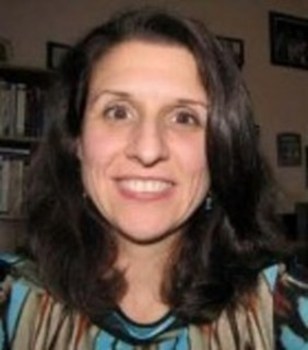Question
Please tell me about Auditory-Verbal (AV) Therapy for children and adult cochlear implant recipients? How is this similar to, or different from, traditional speech therapy?
Answer
As defined by the Auditory Verbal Position Statement: the Auditory-Verbal philosophy is a logical and critical set of guiding principles. These principles outline the essential requirements needed to realize the expectation that young children with hearing loss can be educated to use even minimal amounts of amplified residual hearing. Use of amplified residual hearing, in turn, permits children with hearing loss to learn to listen, to process verbal language, and to speak.
The goal of Auditory-Verbal practice is that children with hearing loss can grow up in regular learning environments that enable them to become independent, participating, and contributing citizens in the mainstream society. The Auditory-Verbal philosophy supports the basic human right that children with all degrees of hearing loss deserve an opportunity to develop the ability to listen and use verbal communication within their own family and community.
The approach emphasizes learning to listen through the auditory modality only. This is in contrast with other oral approaches that incorporate other modalities, such as speech reading- visual modality, and greatly differs from sign approaches that place variable emphasis on audition and heavy emphasis on visual communication modes. These approaches are summarized below (written by Amy Robbins, from the Parent's and Educators Guide to Cochlear Implants, Advanced Bionics Corporation, 2003).
Oral Approaches
Auditory-Oral (Multi-sensory) - Requires children to use their residual hearing in combination with speech reading, kinesthetics or tactile cues, such as placing the child's hand upon the teacher's face throat. This is the most common approach used in self-contained Oral classrooms.
Auditory-Verbal - Emphasizes the use of residual hearing as the primary modality for language learning; may deprive child of speech reading cues by covering mouth; seeks to develop an ''attitude of listening'' by integrating child into regular schools.
Cued Speech - Uses speech and auditory cues in combination with phonemically based handshapes that distinguish speech sounds that look alike on the lips.
Sign Approaches
Total Communication (TC) - Advocates the use of all communication modalities appropriate for a given child, including speech, signs, listening, fingerspelling, and speechreading. The most common implementation of TC is the simultaneous use of speech and English-based sign.
Bilingual/Bicultural (Bi/Bi) - Relies upon American Sign Language, a naturally-evolved and complete manual language used by culturally Deaf people in the United States. English is often taught secondarily through reading and writing. ASL is typically presented without voice because spoken English does not correlate word-for-word with ASL.
It should be recognized that, within each of the methods mentioned above, a wide range of performance has been documented. Highly successful implant recipients may be found in each method. However, it is clear that children with cochlear implants benefit most from methods that strongly encourage the development of listening and speaking skills and the integration of these skills into everyday life.
-written by Amy Robbins, from the Parent's and Educators Guide to Cochlear Implants, Advanced Bionics Corporation, 2003
The AVT approach is often used with children but may be applied to adult rehabilitation as well. For further information on AVT, visit the Auditory Verbal International Website at https://www.auditory-verbal.org.
Other helpful websites include (copy and paste the links into your browser):
AUDITORY REHABILITATION
Randall's ESL Cyber Listening Lab https://www.esl-lab.com/
(Created for English as a Second Language Students, but can be very useful for
learning to listen in general)
AUDITORY-VERBAL INFORMATION
https://www.listen-up.org
Auditory-Verbal FAQ https://hearingimpaired.com/5therapy.html
Auditory-Verbal International https://www.auditory-verbal.org/
CUED SPEECH INFORMATION
https://www.listen-up.org
https://www.language-matters.com/cueinfo.php3
SIGN LANGAUGE INFORMATION
https://www.listen-up.org/sign.htm
LANGUAGE DEVELOPMENT (oral/AV, auditory training etc)
https://www.listen-up.org
John Tracy Clinic https://www.johntracyclinic.org/
Oberkotter Foundation -Oral Deaf Education
https://oraldeafed.org

